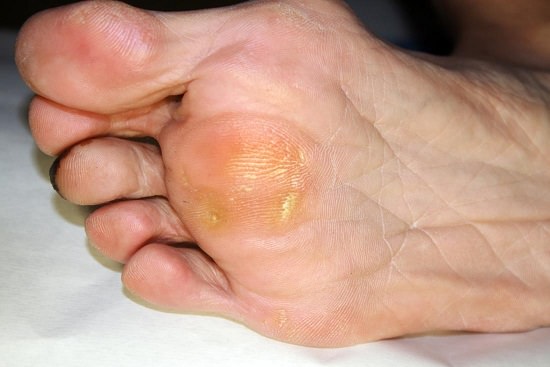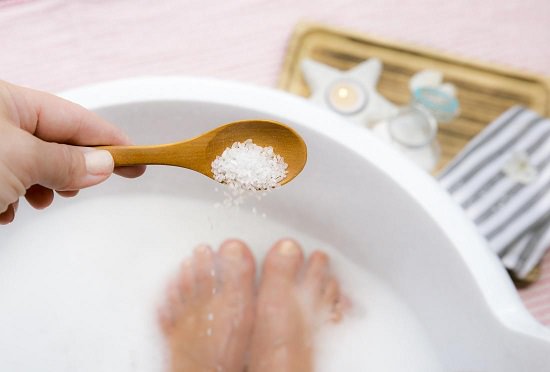A callus is a common occurrence. It can not only cause pain or discomfort, but it can also look unsightly. Get hold of a home remedy for callus here!
Corns and Calluses

Your feet bear your whole weight and help you move around all your life. They undergo a lot of physical stress and are subject to the everyday wear and tear that constant movement causes. Similarly, your hands too perform a lot of work and repeated movements throughout your life. There are a lot of medical conditions that afflict your feet and hands. Calluses and corns are some of the common complaints that most people suffer from.
Calluses and corns form on your feet in areas with repeated friction or constant pressure. They are patches of hard, thickened skin. Corns are small and round and often appear on the top of toes, between the toes, or on the bottom of the feet. It may appear as a bump, which is painful when you apply pressure on it.
Calluses are more extensive and with less defined edges than corns. They mostly form on the bottom of your foot, heel, side of your foot, or on the big toe. They form in areas of the foot that are bony and bare your weight more than other areas.
Calluses can also occur on the tips of the fingers of musical instrument players, weightlifters, or artisans. Calluses are your body’s mechanism of protecting the soft inner layers of your skin from constant pressure or friction.
Initially, calluses and corns cause no pain, but they may become painful and tender over time either because of infection or if fissures develop on them. Painful, infected, or large calluses may need medical or surgical treatment depending on their severity.
Reasons for the development of corns and calluses
Ill-fitting shoes are one of the most typical reasons for corns and calluses.
Tight or narrow shoes rub against your feet or put undue pressure on them. High heeled footwear can cause calluses to develop on the balls of their feet.
If you tend to stand, walk or run for extended periods, you can develop calluses. Work, hobbies, or intense sports can also be the reason for calluses. Walking barefoot, wearing shoes without socks, or wearing socks that are loose and bunch up under your feet are significant causes for callus formation.
Walking without adequately distributing the weight of your body on your feet can also be a cause. This can cause calluses to develop in those areas of your foot where more of your weight is concentrated.
Foot abnormalities that alter the way you walk, which are congenital or due to accidents or other conditions like bunions, bone spurs, and hammertoes, can cause calluses too. Smoking can also lead to callus formation.
Home Remedies for Callus

Soaking the calluses in warm soapy water and rubbing them with a pumice stone in a circular pattern helps to remove the hardened skin. Follow this procedure by properly drying the area and moisturizing it with oil or a chemical-free moisturizer. To see the results, perform the home remedy on a regular basis.
Avoid using sharp implements on the hardened skin as it can result in bleeding, injury, or infection. You can mix Epsom salt in warm water and soak your feet in it to soften the callus. You can use a foot file with a metal grate to exfoliate the callus’s skin. Always remember to dry and moisturize the skin after exfoliating.
Mix 2 tablespoons of baking soda with water and a few lime juice drop to make an exfoliating paste. Apply it to the callus every day at bedtime and cover it with gauze. Repeat till the callus disappears. You can use commercially available exfoliating creams containing salicylic acid, urea, or ammonium lactate on the callus to soften the callus over a period of time. Another remedy is to use callus pads or padded bandages, which are sold over the counter to protect areas subject to constant friction.
When to seek medical attention?
If you have diabetes, have peripheral neuropathy, or suffer from low blood circulation issues, it is better to have a doctor treat the callus. If the callus is swollen, painful or the skin over it is broken, consult a doctor or a podiatrist.
